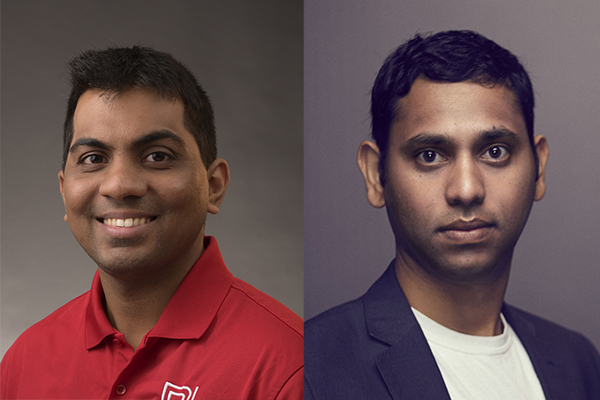President's Blog: From the Heart

When Ingenuity Meets the Human Spirit
By Eric F. Spina
This is a testament to the human spirit during a time when that spirit is being tested.
It’s about how a young, gifted University of Dayton researcher handed off the baton to a fellow UD graduate and a global team of experts in a fast, furious sprint to find a reliable technology that can quickly diagnose COVID-19.
It’s a story that starts and ends with inventive minds and nimble organizations — working together for the common good.
Just two weeks ago, UDRI research scientist Barath Narayanan turned his passion for helping doctors diagnose and treat patients more quickly into a quest. On his own time, he significantly improved an artificial intelligence algorithm that can discern from lung X-rays, COVID-19 positive patients from those without the virus.
That, in itself, is an amazing accomplishment. But what happens next is nothing short of remarkable. In less than 72 hours, Matt Willenbrink, an attorney who directs technology partnerships in UD’s Office for Research, executed a licensing agreement with Blue Eye Soft, a Greenville, South Carolina, software development company headed by alumnus Srikanth Kodeboyina.
In the last several days, Blue Eye Soft’s staff reached out virtually to more than 100 experts in Singapore, India and across the U.S., who are contributing their expertise in fields ranging from artificial intelligence to cybersecurity to help expedite the software’s development. The company has filed a provisional patent and will seek FDA approval.
By day, Dr. Narayanan, who received both a master’s and doctoral degree in electrical engineering from UD, works on sponsored research in artificial intelligence for manufacturing and commercial applications.
By night and weekends, he pursues a passion — using artificial intelligence to give doctors the tools they need to rapidly diagnose patients with life-threatening diseases. He had already developed software codes that can successfully detect (with 92 to 99 percent accuracy) diseases from lung and breast cancer to brain tumors and tuberculosis before adapting that work for this vitally important use. He credits his graduate adviser, Dr. Russell Hardie, a professor in the School of Engineering, for supporting his off-the-clock research and providing feedback that led to improvements in the code.
“At a time when so many are faced with personal and professional worries, I am immensely proud of how this team came together to make what we hope will be a significant contribution to fighting this awful disease,” wrote Vice President for Research John Leland in an email to me.
Amen. This is a testament to the human spirit.
